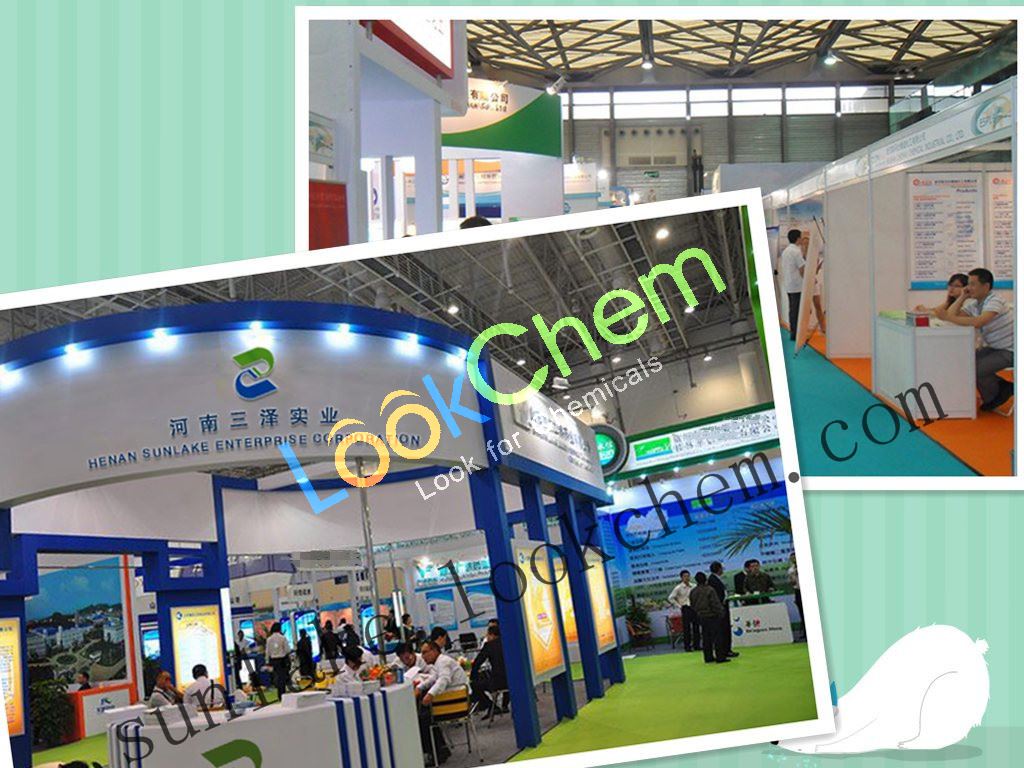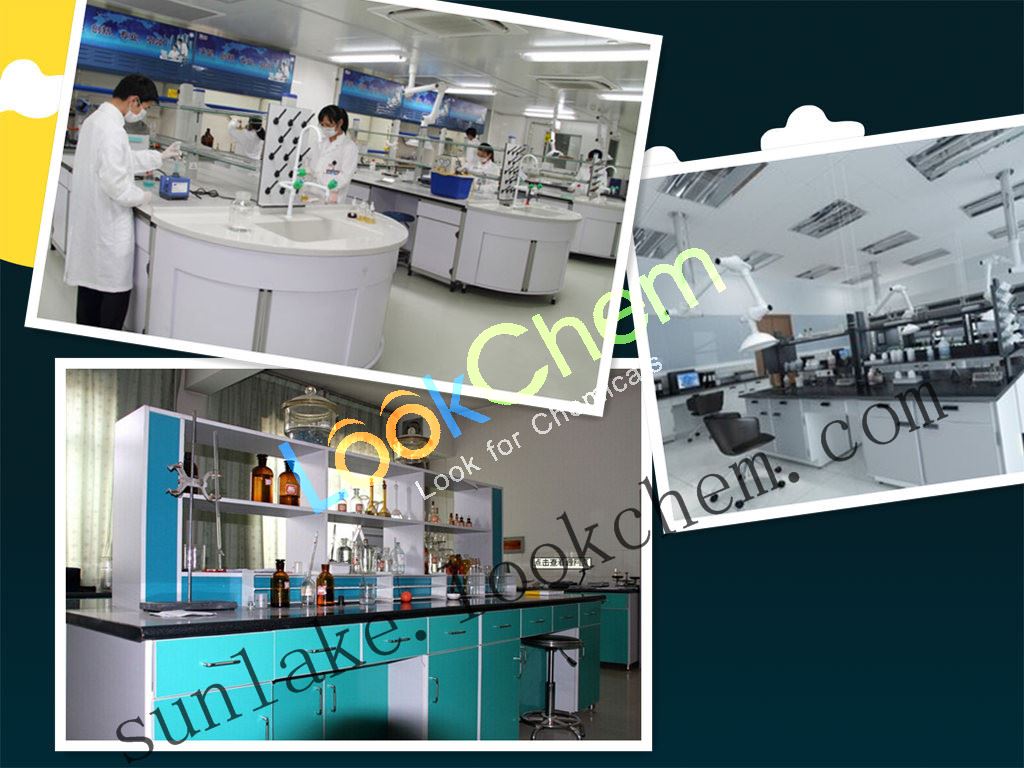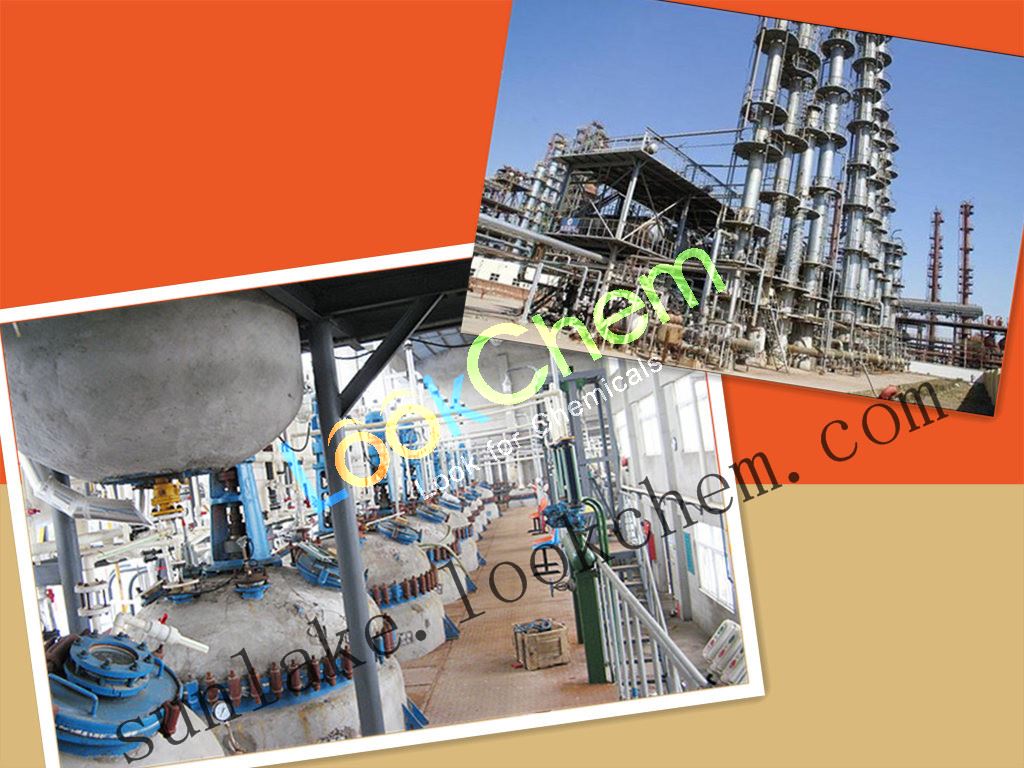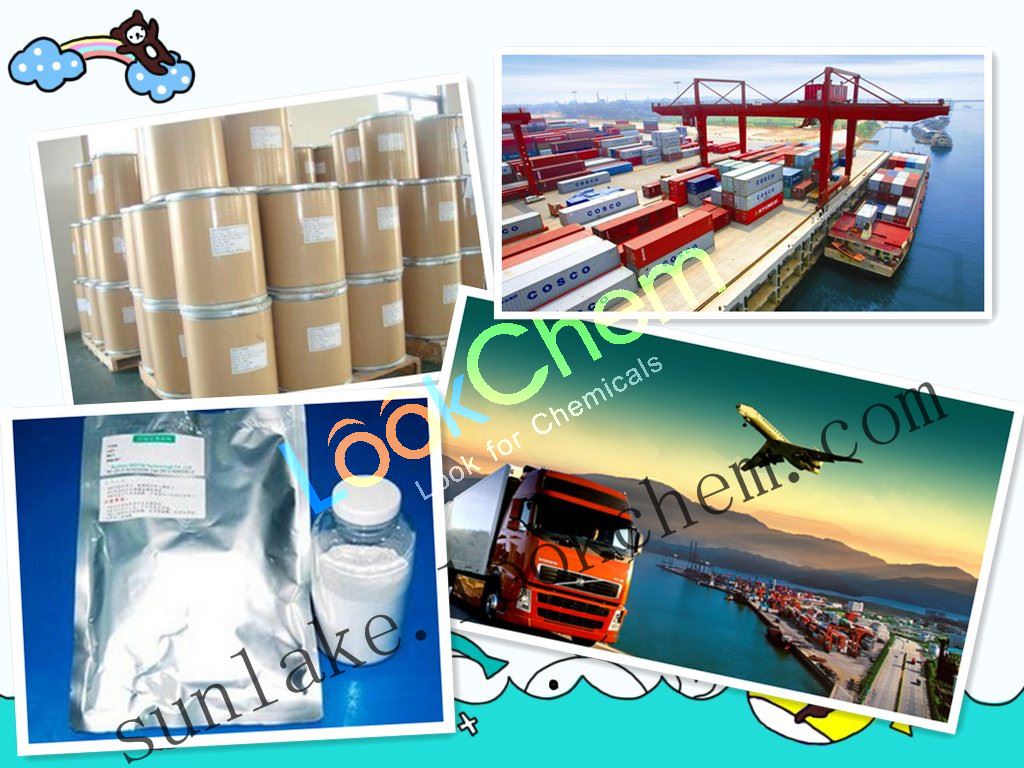- Min.Order :1 Kilogram
- Purity: 99%
- Payment Terms : L/C,D/A,D/P,T/T,Other
Keywords
Guanidine hydrochloride 50-01-1 CH6ClN3
Quick Details
- Appearance:White cryst or powder
- Application:50-01-1
- PackAge:As requested
- ProductionCapacity:300|Kilogram|Day
- Storage:store at R.T.
- Transportation:By air or by sea
Superiority:
| Guanidine hydrochloride Basic information |
| Product Name: | Guanidine hydrochloride |
| Synonyms: | guanidine,monohydrochloride;guanidinechloride;Guanidinemonohydrochloride;guanidiniumhydrochloride;usafek-749;CARBAMIDINE HYDROCHLORIDE;IMINOUREA HYDROCHLORIDE;GUANIDINIUM CHLORIDE |
| CAS: | 50-01-1 |
| MF: | CH6ClN3 |
| MW: | 95.53 |
| EINECS: | 200-002-3 |
| Product Categories: | Pharmaceutical Intermediates;Miscellaneous Biochemicals;proteinmod;Inhibitors |
| Mol File: | 50-01-1.mol |
|
|
|
| Guanidine hydrochloride Chemical Properties |
| Melting point | 180-185 °C(lit.) |
| density | 1.18 g/mL at 25 °C(lit.) |
| refractive index |
n |
| storage temp. | Store at RT. |
| solubility | H2O: 6 M, clear, colorless |
| Water Solubility | 2280 g/L (20 ºC) |
| Sensitive | Hygroscopic |
| Merck | 14,4562 |
| BRN | 3591990 |
| Stability: | Stable. Hygroscopic. Incompatible with strong oxidizing agents. |
| CAS DataBase Reference | 50-01-1(CAS DataBase Reference) |
| EPA Substance Registry System | Guanidine, monohydrochloride(50-01-1) |
| Safety Information |
| Hazard Codes | Xn,Xi |
| Risk Statements | 22-36/38 |
| Safety Statements | 26-36-22 |
| WGK Germany | 1 |
| RTECS | MF4300000 |
| F | 3-10 |
| HS Code | 29252000 |
| Guanidine hydrochloride Usage And Synthesis |
| Uses |
Guanidine hydrochloride is used in RNA isolation to dissociate nucleoproteins and inhibit RNase. Strong chaotropic agent useful for the denaturation and subsequent refolding of proteins. This strong denaturant can solubilize insoluble or denatured proteins such as inclusion bodies. This can be used as the first step in refolding proteins or enzymes into their active form. Urea and dithiothreitol (DTT) may also be necessary. |
| Drug intermediates |
Guanidine hydrochloride drug used primarily as an intermediate in the manufacture of sulfadiazine, an important raw material sulfamethyldiazine, sulfamethazine and folic acid. Guanidine hydrochloride (or guanidine nitrate) and ethyl cyanoacetate reaction, cyclization of 2,4-diamino-6-hydroxy pyrimidine, folic acid for the synthesis of antianemic. Furthermore guanidine hydrochloride also used synthetic anti-static agent. |
| Preparation | In Dicyanodiamide and ammonium (Ammonium chloride) as raw material, melt reaction at 170-230 ℃, guanidine hydrochloride obtained crude, refined products. |
| The role of urea and guanidine hydrochloride in the purification of protein inclusion bodies |
Denaturing agents (urea and guanidine hydrochloride) can break the hydrogen bond in the protein structure, which increases the solubility of non-polar molecules including the side chains of amino acid, reducing the hydrophobic interaction; Urea can also deep into the interior of the protein molecule to affect the close packing state of protein molecules. In addition, detergents, organic solvents, heavy metals, heat, mechanical forces, freezing, ultrasound, high pressure, radiation, etc. all can cause protein denaturation. These kinds of denaturation are only related to disrupting the secondary bond interaction such as the hydrogen bond, salt bond, hydrophobic interactions, van der Waals interactions without breaking the covalent bonds. Some denatured proteins can automatically restore into its natural conformation after the denaturation factors have been removed, a phenomenon known as protein refolding (re-naturation), namely that re-folding in the field of protein folding research. Inclusion body protein purification Most conditions are at pH8, usually use strong denaturing agents such as urea (6-8mol/L), guanidine hydrochloride (Gdn-HCl 5~8 mol/L or 6mol/L), to disrupt any kinds of chemical bonds within or between protein molecules through the interactions between ions, and thus stretching the polypeptide. In general, Gdn-HCl is better than urea due to that Gdn-HCl is stronger denaturant than urea, which enables the dissolution of inclusion bodies which cannot be dissolved by urea. Moreover, urea has an issue that it decomposed isocyanate can cause the formylation of the free amino groups of the polypeptide, especially for long-term incubation at alkaline pH condition. Using detergents such as SDS, n-hexadecyl-trimethyl ammonium chloride, or Sarkosyl, etc., which can disrupt the hydrophobic bonding within the protein, can also dissolve the inclusion body proteins. Moreover, we can use TritonX-100 to dissolve the protein inclusion bodies of Zymononas mobilis levansucrase. In addition, for the cysteine-containing proteins, their isolated inclusion bodies generally contain a number of inter-chain disulfide bonds and non-active disulfide bonds within chain. For these inclusion bodies, we can apply some organic solution, alkaline environment (greater than 9) or acid (70% formic acid) to dissolve them. We need to add a reducing agent in denaturing solution such as 2-mercaptoethanol (β-ME), dithiothreitol (of DTT), dithioerythritol alcohols, reduced glutathione (GST), and the cysteine. Concentration of the reducing agent is generally 50-100mM β-ME or DTT. Some literature also use 5mM. The concentration of the reducing agent has nothing to do with the number of the disulfide bonds. For proteins without disulfide bonds, adding or not reducing reagent doesn’t make any difference, such as improving the dissolution of inclusion bodies of bovine growth hormone. For the inclusion bodies of certain target proteins without disulfide bonds, sometimes it is still necessary to use a reducing agent which may be due to that disulfide bonds-containing impure protein affects the dissolution of inclusion bodies. Also we need to add a metal chelating agent such as EDTA or EGTA, to chelate metal ions such as Cu2+, Fe2+ prevent the oxidation reaction between the reduced thiol groups with them. After the dissolution of denaturant, protein will lose its biological activity. |
| A cyclic guanidine hydrochloride capsules |
[Properties]capsules, yellow powder inside it. [Toxicology] This product is a broad-spectrum antimicrobial agent which has a bactericidal effect when applied at high concentrations. The product has certain antibacterial effects on Streptococcus pneumoniae, hemolytic streptococcus, staphylococcus and some grass lotus bacteria, Clostridium perfringens, Bacillus anthracis, Yersinia pestis, diphtheria, tetanus, Brucella spp, Haemophilus influenzae, bending spp., and Vibrio cholerae. It also has inhibitory effects on Rickettsia, mycoplasma, Chlamydia, spirochetes, and some protozoa. However, Enterobacteriaceae such as Escherichia coli, Klebsiella, Salmonella, and Shigella are mostly resistant to this product. This product has a better effect on Gram-positive bacteria than gram-negative bacteria, but Enterococcus is resistant to it. Others species such as Actinomyces, Bacillus anthracis, Listeria monocytogenes bacteria, Clostridium spp and Nocardia, are also sensitive to the chemical. Neisseria gonorrhoeae which is resistant to this product is also resistant to tetracycline. The product has a certain antibacterial effect on Neisseria gonorrhoeae and Neisseria meningitidis with a certain antibacterial activity, but penicillin-resistant Neisseria gonorrhoeae is also resistant to tetracycline. This mechanism of action of this product is that it can specifically bind to the A site of bacterial 30S ribosomal subunit, blocking the attach of aminoacyl-tRNA into this site, and thus blocking the growth of the peptide chain and the overall protein synthesis. [Pharmacokinetics] This product has a high solubility in water, and can be rapidly absorbed after oral administration. The blood concentration reaches highest within 3 hours with effective blood concentration being maintained for 12 hours. Compared with other tetracyclines, its main feature is its great affinity to bronchial and lung tissue. It has a much higher concentration in the bronchus, lung tissue and bronchial secretions than comparable amount tetracycline hydrochloride after orally administration. Its concentration in the blood can be maintained at a higher level and longer period than tetracycline. It is mainly excreted by urine in its active form. [Indications]For respiratory infections caused by sensitive strains. [Dosage] Oral administration. Day 1.2g (12 grains), three to four times daily. [Specification] 0.1g (10 million units). [Storage] sealed and kept in a dry, cool and dark place. |
| Reference quality standards |
Name of Project Specifications Pharmaceutical grade industrial grade Appearance white crystal; white crystal Content > 99% 99.5% Ammonium <0.3% 0.5% Water Insoluble substance <0.1% 0.1% Moisture <0.3% 0.3% Ash <0.05% 0.05% Water-soluble test qualified; qualified Melting range °C 184-188; 182-188 Absorbance (UV wavelength 260NM) 《0.04 Absorbance (UV wavelength 280NM) 《0.02 PH value (4% aqueous solution) 6.4 ± 0.2 6.4 ± 0.2 |
| Chemical properties |
White or yellowish lumps; Solubility in 20 °C: 200g/100g in water; 76g/100g in methanol; 24g/ 100g in ethanol; Almost insoluble in acetone, benzene and ether. The above information is edited by the Chemicalbook of Dai Xiongfeng. |
| Uses |
1. For organic synthesis and pharmaceutical industry. 2. Mainly used as a pharmaceutical intermediate; an important raw material for producing sulfadiazine, sulfamethyldiazine, sulfamethazine and folic acid. 3. Used as intermediates for synthesis of medicine, pesticides, dyes and other organics. For synthesis of 2-amino-pyrimidine, 2-amino-6-methyl-pyrimidine, and 2-amino-4,6-dimethyl-pyrimidine. A intermediate for producing sulfadiazine, sulfamethyldiazine, and sulfamethazine. Guanidine hydrochloride (or guanidine nitrate) can be reacted with ethyl cyanide for cyclization into 2,4-diamino-6-hydroxy-pyrimidine. This is for synthesis of anti-anemia drugs: folic acid. It can also be used for the synthesis of anti-static agent of synthetic fiber. |
| Production method | Use dicyandiamide and ammonium salts (ammonium chloride) as raw material. Perform melting reaction at 170-230 °C to obtain crude guanidine hydrochloride was crude. Refine to get the final product. |
| Chemical Properties | White cryst. powder |
| Usage | cholinergic |
| Usage | Guanidine has a good bacterial and fungicidal efficacy when used in low concentration and can also be used as disinfectant. |
| Guanidine hydrochloride Preparation Products And Raw materials |
Details:
- Exhibition in shanghai
We have clients throughout the world:
Professional service and rich experience make customers feel at ease, adequate stock and fast delivery meet your desire.

Our Laboratoy
We have our own independent lab test center:
This makes sure that our technology support is reliable and authoritative.All of self-owned fine chemicals are manufactured strictly in accordance with international standard.,and also has scientific cooperation with local colleges and institutes.

Our factory
High quality with competitive price:
We are manufacturer and can provide high quality products with factory price

Package & Shipment
Fast and safe delivery:
Parcels can be sent out within 24 hours after payment. Tracking number is available
Secure and discreet shipment. You have various choices of transportation methods

You Might Also Like
-
free samples 54735-61-4 NO.1 factory
CAS NO:54735-61-4
-
free samples 3387-36-8 NO.1 factory
CAS NO:3387-36-8
-
free samples 869357-68-6 NO.1 factory
CAS NO:869357-68-6
-
free samples 643-10-7 NO.1 factory
CAS NO:643-10-7
-
free samples 1420-49-1 NO.1 factory
CAS NO:1420-49-1
-
free samples 14985-44-5 NO.1 factory
CAS NO:14985-44-5
Related Searches
About|Contact|Cas|Product Name|Molecular|Country|Encyclopedia
Message|New Cas|MSDS|Service|Advertisement|CAS DataBase|Article Data|Manufacturers | Chemical Catalog
©2008 LookChem.com,License: ICP
NO.:Zhejiang16009103
complaints:service@lookchem.com Desktop View